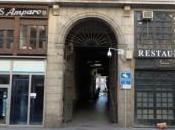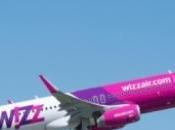
…e pensare che la Spagna è stata la fonte ispiratrice di questo blog….Madrid il nostro primo post!!!!
E in Spagna siamo tornate, per festeggiare i nostri compleanni dei 30 e 31 anni.
Santander e Bilbao, da venerdì a domenica, per un weekend perfetto!
Eccetto il tempo: non ha smesso mai di piovere! D’altronde, però, era pur sempre novembre!
Dunque, anche se con un po’ di ritardo, ecco qui la nostra mini vacanza.
… and to think that Spain has been the source of inspiration for this blog …. Madrid our first post!!
And in Spain we went back to celebrate our birthdays of 30 and 31 years.
Santander and Bilbao, from Friday to Sunday, for a perfect weekend!
Except for the weather: it never stopped raining! On the other hand, however, it was November!
However, even if with a bit ‘late, here is our little vacation.
Arriviamo a Santander praticamente all’ora di pranzo. Dall’aeroporto potete prendere tranquillamente il bus che in 20 minuti neanche vi porterà in centro.
Abbiamo deciso di dormire qui tutte e due le notti e di raggiungere Bilbao con il treno in giornata…idea che si è rivelata ottima.
Per il pernotto scegliamo l’Hotel Central, molto comodo, praticamente in centro, a due passi da tutto, se non fosse che al nostro ritorno siamo state “attaccate” tutte e due dagli acari!
Detto questo, onoriamo subito la terra spagnola concedendoci una super paella e tanto vino rosso….
We arrive in Santander at lunchtime. From the airport you can safely take the bus that will take you in 20 minutes even in the center (ticket € …)
We decided to stay here both nights and get to Bilbao by train in one day … that idea turned out to be excellent.
For overnight we choose the Central Hotel, very convenient, practically in the center, walking distance to everything, except that on our return we were “attacked” both by mites!
That said, we honor the Spain, immediately, with a super paella and much red wine ….

Per gustarcela al meglio scegliamo un ristorantino tradizionale e caratteristico: Casa Albo (Calle de la Peña Herbosa, 15). Meglio non ci poteva andare!
Due passi lungo il Paseo de Pereda sono l’ideale per digerire! Si tratta di un grande viale, parallelo al mare, che si estende da Puerto Chico fino al palazzo della posta.
We choose a traditional characteristic restaurant: Casa Albo (Calle de la Peña Herbosa, 15). Better could not go!
After lunch, a walk along the Paseo de Pereda was been a good idea to digest! It is a great avenue parallel to the sea that stretches from Puerto Chico to the main post office.

Anche con la pioggia, il panorama è molto affascinante…e rilassante.
Even with the rain, the scenery is very charming … and relaxing.


La Chiesa Cattedrale di Nuestra Senora de la Asuncion è la nostra prima meta culturale…
The Cathedral Church of Nuestra Senora de la Asuncion is our first cultural destination …

La cattedrale si sviluppa su due livelli. La chiesa inferiore risale agli inizi del XIII secolo. Quella superiore al XIV ed il chiostro al XV, sebbene abbiano subito importanti modifiche.
The cathedral is built on two levels. The lower church goes back to the early thirteenth century. The upper to the fourteenth and the cloister to the fifteenth, although they have undergone major changes.




Entrambe sono in stile gotico.
In quella inferiore sono stati rinvenuti, attraverso scavi, alcuni resti di terme e altre tracce di un insediamento. Essi sono visibili attraverso una lasta di vetro posta sul pavimento della basilica.
Qualche giretto al calar della sera per il centro e i suoi vicoli …
Both are in the Gothic style.
In the lower church were found, through excavations, some remains of baths and other traces of a settlement. They are visible through the plate of glass placed on the floor of the basilica.
Some strolls at nightfall for the center and its alleys …


… e poi cena, ovviamente, a base di tapas, che qui chiamano pintxos, passando da un posticino all’altro.
…and then dinner, of course, based on tapas, here called pintxos, from a place to another.







.. sulla via di ritorno verso casa, ecco qualche scorcio di Santander in notturna.
… on the way back home, here are some glimpses of Santander at night.


Plaza Porticada
Proprio sulla via di casa, ci imbattiamo in un concertino non male…anche se un po’ retrò!
Just on the way home, we come across a concert not bad … although a little ‘retro!

La mattina seguente si parte per Bilbao.
E’ la città più importante dei Paesi Baschi. Si sviluppa lungo le sponde del fiume Nervión, la cui navigabilità ha fatto si che, con gli anni, divenisse centro di scambi culturali.
Bilbao, inoltre, è sempre stata meta di passaggio di parecchia gente, essendo una tappa fondamentale del Camino de Santiago.
Per la strade della città, nel centro storico, troverete ancora le indicazioni.
The next morning we leave for Bilbao.
It ‘s the most important city in the Basque Country. It is spread along the banks of the river Nervión whose navigability has meant that, over the years, became the center of cultural exchange.
Bilbao also has always been a stopping point for many people, being a important stop-over the Camino de Santiago.
along the city’s streets, in the historical center, you will still find the informations.

Appena arrivate, sempre sotto una pioggerella costante, raggiungiamo subito il famoso Guggenheim, opera di Frank Gehry.
As soon as you arrive, always under a constant drizzle, we reach the famous Guggenheim, designed by Frank Gehry.

Affascinante, quasi surreale, questa struttura, nata nel 1997, con i suoi 24.000 mq di superficie, domina indiscussa tutta l’area del lungofiume. Le sue forme rette, convesse, curve, in acciaio, vetro, pietra gli conferiscono un aspetto futuristico.
Charming almost surreal, this structure was established in 1997 and, with its 24,000 square meters, dominates unchallenged the whole area of the riverfront. Its shapes, its lines convex, curved, the steel, the glass, the stone, give to it a futuristic look.

Tutta l’area circostante è raccolta in un’atmosfera quasi magica, irreale.
Davanti a voi, sul fiume, troverete il Ponte di La Salve, con gli archi rossi di Daniel Buren, eretti nel 2007, per festeggiare i 10 anni dall’ apertura del Museo.
The whole surrounding area is caracterized by magical and unreal atmosphere.
In front of you, on the river, you will find the La Salve Bridge, with red arches, erected in 2007 by Daniel Buren, to celebrate 10 years on from ‘Opening of the Museum.

Una volta lì, non potrà sfuggirvi l’originale opera di Louise Bourgeois “Maman“: un enorme ragno di bronzo e acciaio e l’opera di Anish Kapoor ” Elevato Tree & The Eye” : una sorta di albero costituito da 73 sfere riflettenti l’ambiente circostante e rinfrangenti una con l’altra, al fine di dissolvere le forme e lo spazio.
Once there, you can not escape from the original work of Louise Bourgeois ” Maman” a huge spider in bronze and steel and the work of Anish Kapoor ” Tall Tree & the Eye “: a kind of tree consists of 73 spheres reflecting the surrounding environment and reflecting between them, in order to dissolve the forms and space.
Louise Bourgeois “Maman”


Anish Kapoor ” Elevato Tree & The Eye”
All’ingresso, dalla parte opposta, il famoso “Puppy” vi darà il benvenuto. Realizzato da Jeff Koons, è divenuto un po’ l’emblema del museo. Si tratta di un cane terrier interamente realizzato di fiori.
L’interno, anch’esso affascinante, conserva mostre temporanee e permanenti, distribuite su tre piani.
At the entrance, in the opposite part, the famous “Puppy” will welcome you. Made by Jeff Koons, it has become a bit ‘the emblem of the museum. It is a terrier dog made entirely of flowers.
The interior also retains fascinating permanent and temporary exhibitions and it spreads over three floors.



È ora di pranzo, tra un’opera e l’altra, la mattinata è passata.
Per raggiungere il centro, attraversiamo il fiume Nervión…
It’s lunchtime. To reach the center, we cross the river Nervión …. .

…passando per il Puente Zubizuri, opera del noto architetto Santiago Calatrava. Anch’esso non poteva che essere sui generis: con la forma di un’arpa, tutto bianco e con un pavimento interamente di cristallo (momentaneamente coperto, forse per la pioggia)!
…crossing over the Puente Zubizuri … built by the famous architect Santiago Calatrava. It is very original, with the shape of a harp, all white and with a floor full of crystal (temporarily covered, perhaps because of the rain)!


Raggiunta la Plaza Nueva, sotto il porticato, ci imbattiamo in una serie di bar che servono pintxos… la nostra scelta non può che essere tra uno di questi… Impossibile resistere a tutte quelle bontà!!
After reaching the Plaza Nueva, we found a number of bars serving pintxos … our choice is, obviously, between one of these … Can not resist all those delights!


Ricaricate, si riparte alla scoperta di Bilbao e del suo centro storico.
Prima però, visitiamo la Basilica de Nuestra Señora de Begoña che si trova nella parte più alta di Bilbao. Per raggiungerla abbiamo preso la Funicolare e fatto una breve passeggiata a piedi.
Recharged, it’s time to start to discover Bilbao and its historic center.
First, however, we reach the Basilica de Nuestra Señora de Begoña which is located in the highest part of Bilbao. To get there we took the funicular and took a short walk.

Il primo impatto è molto suggestivo.
The first impact is very impressive.

Dedicata alla patrona di Vizcaya, fu eretta sui resti di un antico tempio e negli anni più volte ricostruita.
Dedicated to the patron saint of Vizcaya, it was erected on the ruins of an ancient temple and rebuilt several times over the years.

La torre dell’orologio ospita 24 campane, provenienti tutte dalla Svizzera (località Sumiswald).
The clock tower houses 24 bells, all coming from Switzerland (Sumiswald).

La torre dell’orologio entrò in funzione nel 1922 e da quella data, continua ad incantare i cittadini con sette diversi carillon. Il 15 agosto e l’11 ottobre la chiesa è sede delle due maggiori feste della città.
Tornate nel centro storico, nel Casco Veijo, girovaghiamo qua e la tra Las siete Calles (le sette vie), passando per Plaza Unamuno.
The clock tower went into operation in 1922 and from that date, continues to enchant the public with seven different melodies. On 15 August and 11 October, the church is seat of the two major parties in the city.
Returned in the historical center, in the Casco Veijo, we wander here and there among the Las Siete Calles (seven streets), through Plaza Unamuno.







E’ la volta della Cattedrale di Santiago: l’edificio più antico della città ed il principale luogo di culto.
It ‘s the time of the Cathedral of Santiago: the oldest building in the city and the main place of worship.

In stile gotico, eccetto per la facciata attuale e per la torre in stile rinascimentale, fu consacrata cattedrale nel 1949.
Venne costruita tra il XIV e il XVI secolo, in onore dell’apostolo Santiago. Essa si trova, infatti, lungo un tratto del cammino di Santiago de Compostela, dove un tempo i pellegrini erano soliti fermarsi per pregare ed onorare l’apostolo.
L’edificio, composto da tre navate, non è particolarmente grande. Sorge dove un tempo si ergeva, nel 1300, un antico tempio, successivamente ampliato e poi distrutto in un incendio nel 1374. Fu allora che si decise di costruire un complesso architettonico che comprendeva la chiesa, il chiostro, il portico, la sacrestia e il campanile.
Oltre al portale principale, nella parte più a nord della costruzione c’è la Porta dell‘Angelo, che conduce al chiostro. Questo ingresso venne realizzato alla fine del Cinquecento quando la Cattedrale venne ampliata, sul terreno prima occupato da un cimitero.
In Gothic style, except for the current facade and the tower in the Renaissance style, was consecrated cathedral in 1949.
It was built between the fourteenth and sixteenth century, in honor of the apostle Santiago. In fact, It is localized on a long stretch of the road to Santiago de Compostela, where once the pilgrims used to stop to pray and honor the apostle.
The building consists of three naves and is not particularly large. It stands where once stood, in 1300, an ancient temple, later extended and then destroyed in a fire in 1374. Was then that it’s decided to build an architectural complex that included the church, the cloister, the porch, the sacristy and the bell tower.
In addition to the main portal, in the northern part of the construction, there is the Angel’s Gate, which leads to the cloister. This entry was made at the end of the sixteenth century when the cathedral was enlarged on the land formerly occupied by a cemetery.

Sulla via del ritorno, è quasi ora di riprendere il treno per Santander, ci godiamo un’ultima passeggiata per la città.
In una piccola calle del centro, troviamo la Fontana del Cane.
On the way back, it’s almost time to take the train to Santander, we enjoy one last walk through the city.
In a small street in the center, there is the Dog’s Fountain.

In stile neoclassico, nell’antichità fungeva da abbeveratoio per gli animali. Nel 1800 vennero aggiunte le tre bocchette a forma di testa di leone, per permettere a tutti di bere. Erroneamente confuse con cani, danno il nome alla fontana.
In neo-classical style, in the antiquity it served as a watering hole for the animals. In 1800 were added three tubes in the shape of a lion’s head, to allow everyone to drink. Mistaken for dogs, give the name of the fountain.


Passiamo in prossimità del Mercado de la Ribera, purtroppo chiuso.
We pass near the Mercado de la Ribera, unfortunately closed.

Costruito nel 1929, è uno dei più grandi mercati coperti d’Europa.
Bellissimo, il Teatro Arriaga è l’ultima tappa della nostra visita a Bilbao.
Built in 1929 it is one of the largest covered markets in Europe.
Beautiful, Teatro Arriaga is the last stop of our visit of Bilbao.

Questa elegante struttura neo-barocca, risalente al 1890, prende il nome dal famoso compositore di Bilbao, Juan Crosótomo de Arriaga.
This elegant neo-baroque theater, dating back to 1890, is named by the famous composer of Bilbao, Crosótomo Juan de Arriaga.

Si trova nello slargo di Calle del Arenal, lungo le sponde del fiume. Sulla parte opposta, l’affascinante Stazione de La Concordia de Bilbao (FEVE).
It is located near Calle del Arenal, along the banks of the river. On the opposite side, there is the charming station at La Concordia de Bilbao (Feve).

Tornate a Santander, stanche ma soddisfatte, ceniamo in un posticino niente male: “Bodegas La Conveniente”.
Return to Santander, tired but satisfied, we dine in a place not bad: “Bodegas La Conveniente”

Domenica mattina, ultimo giorno a nostra disposizione, lo dedichiamo alla baia di Santander.
Percorrendo il Paseo de Pereda..
On Sunday morning, the last day at our disposal, we explored the bay of Santander.
Walking along the Paseo de Pereda …




…passiamo di fronte al “Monumento ai Raqueros”.
…going near the “Monument to the Raqueros”.

Sono 4 state di bronzo, raffiguranti bambini, i cosiddetti raqueros, figure tipiche di Santender, bambini poveri , emarginati che si guadagnavano da vivere raccogliendo le monete che i turisti gettava in mare.
Proseguendo verso la zona dell’Avenida de la Reina, prima di raggiungere El Sardinero, uno dei punti più belli della baia dove si trovano alcune tra le spiagge migliori della città, superato Puertochico…
They are 4 bronze statues , depicting children, the so-called raqueros, typical figures of Santender, poor children, outcasts who earned their living by collecting coins that tourists threw into the sea.
Continuing towards the area of Avenida de la Reina, before reaching El Sardinero, one of the most beautiful spots of the bay where you can find some of the best beaches in the city, passed Puertochico …

…passiamo davanti al Palazzo dei Festival di Santander.
… we look the Palais des Festivals of Santander.

L’imponente struttura, a dire la verità, non ci piace affatto!
Passeggiando lungo la Penisola della Magdalena, ci rendiamo conto che è davvero bellissima. Il rumore del mare ci incanta e ci accompagna lungo il percorso…
The majestic structure, to tell the truth, we do not like at all!
Strolling along the Peninsula of Magdalena, we realize that it’s really beautiful. The sound of the sea enchants us and accompanies us along the way …






Attraversiamo a piedi lo splendido parco pubblico e raggiungiamo il maestoso palazzo.
The Palace of the Magdalena, on top of the peninsula, it is our goal …
We cross, walking, the beautiful public park and reach the majestic palace.





Siamo sulla punta della penisola e da qui il panorama è incredibile. Si possono ammirare, in lontananza, le varie isolette di los Ratones, Pedroda, la Torre e la Horadada.
We are on the tip of the peninsula and, from here, the view is incredible. You can admire, in the distance, the various islands of los Ratones, Pedroda, the tower and la Horadada.



Our morning continues along the most popular area of Santander: El Sardinero, where you will find some of the most beautiful beaches.


La zona si divide in due parti: la Primera Playa (o Playa de la Concha) la più affollata e la Segunda Playa (o Playa de Castañeda) che si estende fino al promontorio di Cabo Mayor, dove si trova il faro di Bella Vista, il più antico di tutta la Cantabria.
The area is divided into two parts: the Primera Playa (or Playa de la Concha), the most crowded and Playa Segunda (or Playa de Castañeda) that extends up to the headland of Cabo Mayor, where there is a lighthouse of Bella Vista, the oldest of all the Cantabria.


Tra le spiagge più note, la Playa del Camello, così chiamata per via della la roccia che richiama la forma dell’animale.
Among the most popular beaches, there is Playa del Camello, so called because of the rock that recalls the shape of the animal.

Ci siamo, però, avvicinate il più possibile..
Our intention was to walk to the lighthouse in Bella Vista but unfortunately, having to leave in the afternoon, we have not done in time.
However, we approached as much as possible …



Hasta luego!





